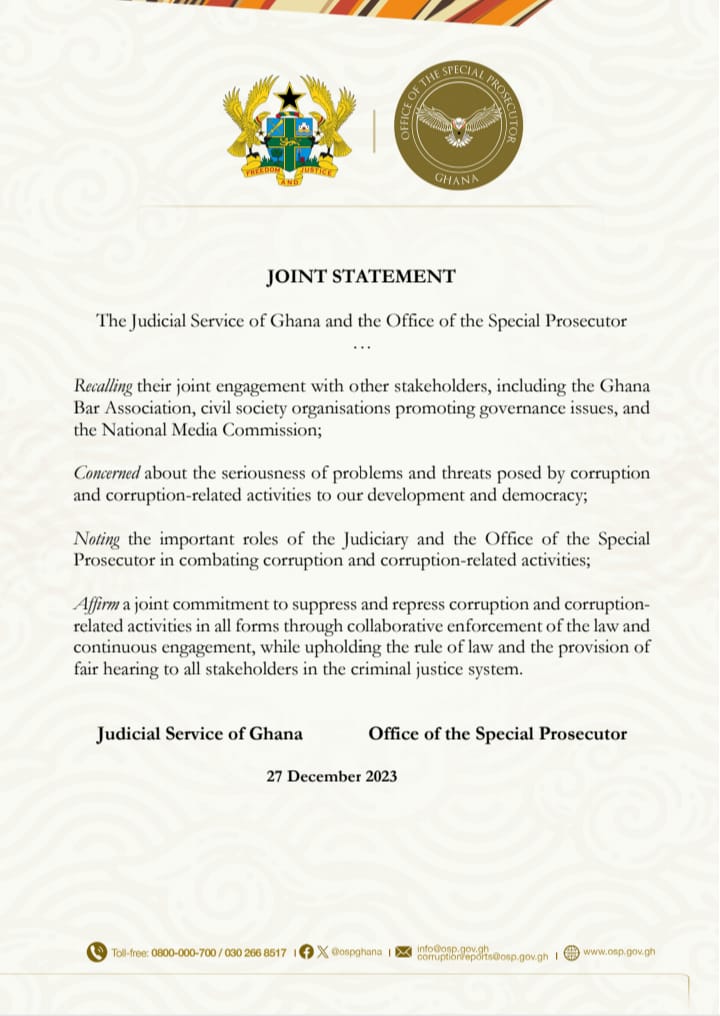
By Kofi Anokye OWUSU-DARKO (Dr),
As corruption scandals involving politically exposed persons (PEPs) dominate national discourse, one critical institution has largely escaped meaningful scrutiny: the banking sector. These are the very institutions that processed, facilitated, and in some cases, seemingly ignored questionable transactions.
The evidence is stark — vast sums of money moved through regulated banks, often originating from state accounts and ending in private hands. Many of these funds were then used to acquire high-value assets such as real estate. Given the existing regulatory frameworks and sophisticated compliance tools available, it is difficult to believe this occurred without at least the tacit consent — or wilful neglect — of the financial system.
This suggests more than isolated lapses. It points to deep structural weaknesses and the possible erosion of risk governance within the banks involved.
To understand how this happened, one must consider the classic three-stage model of money laundering:
- Placement – Introducing illicit funds into the financial system, often in structured amounts to avoid triggering alerts.
- Layering – Obscuring the money trail by moving funds through multiple accounts or converting them into other asset forms.
- Integration – Reintroducing these “cleaned” funds into the economy through real estate purchases, luxury goods, or investments.
In the scandals currently under investigation, all three stages appear to have unfolded openly within the regulated banking environment. Public funds were transferred into private accounts, followed by the acquisition of high-value assets. These patterns represent textbook red flags — the kind that AML and risk management systems are specifically designed to detect.
So, the question remains: How did these transactions escape detection — or were they simply ignored? And if they were, by whom?
Did the Banks Fail — or Collaborate?
Banks are not passive intermediaries. They are equipped with automated Anti-Money Laundering (AML) systems specifically designed to detect unusual transaction patterns — especially when clients deviate from their established financial behaviour or “station in life.”
Under Ghana’s Anti-Money Laundering Act, 2020 (Act 1044), financial institutions are legally mandated to:
- Conduct Enhanced Due Diligence (EDD) on Politically Exposed Persons (PEPs);
- Establish and regularly update Know Your Customer (KYC) profiles;
- Report anomalies via Suspicious Transaction Reports (STRs) to the Financial Intelligence Centre (FIC).
These are not theoretical or optional safeguards. They are concrete, technology-driven mechanisms embedded in every bank’s compliance framework. So how did transactions involving large cash withdrawals, transfers of public funds into private accounts, and high-value asset acquisitions by PEPs bypass these systems?
When a PEP — who inherently carries a higher risk of corruption — initiates such transactions, it should not merely raise a red flag. It should trigger immediate scrutiny and intervention. These are not isolated transactions; they are systemic breaches.
If STRs were indeed filed, what follow-up actions were taken by the Bank of Ghana (BoG) or the FIC? And if no reports were filed, then we are not looking at a lapse — we are confronting a foundational failure of the risk managing system of the banks involved.
Risk Governance: Where Were the Defenders?
Banks are structured to prevent precisely the kinds of institutional failures currently under scrutiny. They operate under a widely recognised Three Lines of Defence model:
- First Line: Relationship officers and front-office teams
- Second Line: Risk management and compliance departments
- Third Line: Internal audit and control functions
In theory, this model is designed to ensure robust internal oversight. In practice, however, its integrity has been compromised.
Today’s banking culture often prioritises revenue generation over risk vigilance. Front-line staff — particularly relationship officers — are rewarded for deposit mobilisation, loan disbursement, and portfolio growth. Those who onboard high-net-worth or politically connected clients with huge deposits are incentivised to preserve those relationships, not scrutinise them.
This shift in priorities undermines the model from within. Red flags are more likely to be overlooked when the individuals responsible for identifying them are financially disincentivised to do so. In some institutions, compliance teams may even come under implicit pressure to turn a blind eye.
When commercial performance is allowed to trump regulatory compliance, the entire risk architecture collapses — not by accident, but by design.
The Moon Analogy — And the Death of the Conservative Banker
There’s a story: a chartered marketer, a chartered accountant, and a chartered banker land on the moon and discover a strange new plant.
The marketer says, “This will sell massively on Earth.”
The accountant runs the numbers and confirms the potential profits.
But the banker pauses and asks, “Can this plant survive in Earth’s climate? What’s the soil composition? Is it adaptable?”
The others label the banker a show-stopper — an obstacle to making money. But in truth, the banker is performing the role the profession was built upon: assessing risk, applying sound judgment, and safeguarding long-term value.
That mindset, however, is vanishing. Today’s bankers are increasingly expected to behave like marketers and salespeople — chasing deposits, booking loans, and closing deals. The analytical caution and risk sensitivity that once defined the banking profession are increasingly being displaced by short-term commercial priorities driven by performance incentives and bonus structures.
The Double Standards in Enforcement
The tragedy is not that Ghana lacks systems to detect illicit financial activity — but that, as recent events suggest, these systems are enforced selectively: often targeting the most vulnerable, while sparing the powerful.
Today, a market porter (kayayo) cannot deposit GHS 5 into her own account through a third party without presenting an ID and submitting to biometric verification. A third party cannot cash even a GHS 5 cheque without a Ghana Card. Informal sector actors are subject to intense scrutiny and rigid compliance.
Yet, in that same system, multimillion-cedi withdrawals and transfers — involving politically exposed persons — have passed through without challenge, oversight, or consequence. Why does enforcement bite hardest at the bottom of the economic pyramid, while the top enjoys impunity?
The very tools used to monitor and police the smallest transactions are more than sufficient to detect — and stop — the illicit diversion of public funds. That they have not been used accordingly reflects not a lack of capacity, but a failure of will and accountability.
Regulatory Silence — A Dangerous Precedent
The Bank of Ghana, with access to systems such as GhIPSS and cheque clearing platforms, has the technological capacity to detect and flag complex transaction patterns across institutions in real time. Likewise, the Financial Intelligence Centre (FIC) receives and is mandated to act on Suspicious Transaction Reports (STRs). Both institutions possess not only the tools, but the legal and moral responsibility to intervene.
Yet their seemingly continued silence raises urgent and troubling questions:
- Are STRs being ignored or inadequately investigated?
- Have supervisory mechanisms become reactive rather than preventive?
- Has regulatory capture compromised the independence and effectiveness of oversight?
When institutions empowered to act choose not to, silence becomes complicity — and in that silence, corruption thrives.
Global Precedents: When Banks Were Held Accountable
Ghana is not alone in confronting the challenge of money laundering within its financial system. What sets other jurisdictions apart, however, is their resolve to confront noncompliance decisively, often through high-profile investigations and substantial financial penalties.
Examples abound:
- HSBC (2012): Fined $1.9 billion by U.S. regulators for facilitating money laundering by drug cartels — a failure attributed to weak internal controls and ignored compliance warnings.
- Standard Chartered (2019): Penalized over $1.1 billion by U.S. and U.K. authorities for breaching AML regulations and violating international sanctions.
- Danske Bank (2007–2015): Over €200 billion in suspicious funds passed through its Estonian branch, triggering criminal investigations and the resignation of senior executives — one of Europe’s largest money laundering scandals.
- Westpac (2020): Australia’s second-largest bank was fined AUD 1.3 billion for more than 23 million breaches of AML laws, including transactions linked to child exploitation.
These global precedents send a clear and uncompromising message: the era of regulatory tolerance is ending. Financial institutions that neglect their AML responsibilities now face not only massive fines, but irreversible reputational damage and public accountability.
Ghana’s regulators and banking institutions would do well to take heed. Inaction is no longer defensible in an increasingly scrutinised global financial landscape.
Conclusion: The Banking Sector Must Answer
It is no longer credible to view Ghana’s banks as passive conduits through which illicit funds simply flowed undetected. The volume, frequency, and audacity of questionable transactions — particularly those involving politically exposed persons — reveal a systemic failure. This failure implicates not only individual actors, but the entire governance architecture of the nation’s financial system.
What is equally troubling is the apparent absence of meaningful investigations or regulatory action against the banks involved. In a world where institutions such as HSBC, Danske Bank, and Westpac have faced billions in penalties for similar anti-money laundering failures, Ghana’s regulatory silence sets a dangerous and unsustainable precedent.
The banks involved, through neglect or complicity, did not merely look the other way — they became enablers. The compliance systems were in place. The technology existed. The legal mandates were clear. What was absent was the institutional will to act when it mattered most. Turning a blind eye to corruption is not only unethical — it is economically reckless and institutionally corrosive.
The public deserves answers:
- Were Suspicious Transaction Reports (STRs) filed — and if so, were they truthful and complete?
- Who authorised these high-risk transactions — and under what justification?
- What internal exceptions were made — and by whom?
- What oversight did the Bank of Ghana and the Financial Intelligence Centre exercise in response?
Confronting Ghana’s corruption crisis requires more than political will — it demands financial accountability. The solution does not lie solely in Parliament or Cabinet, but also in the vaults, compliance systems, and boardrooms of its banks.
Until these institutions are held accountable — and until enforcement becomes impartial, proactive, and uncompromising — the machinery of corruption will remain not only intact, but institutionally enabled, and economically devastating.
The author is a Chartered Banker with expertise in operational risk management and banking operations. He is also a practitioner in Appropriate Dispute Resolution (ADR) and Organisation Development, and the founder of KAOD Consult. (Blogspot:Kofianokye.blogspot.com;Kofidarko2.blogspot.com ; Email: [email protected]; Website: KAOD Consult.com)
The post Systemic lapses in AML compliance: Did some banks enable grand corruption? appeared first on The Business & Financial Times.
Read Full Story











Facebook
Twitter
Pinterest
Instagram
Google+
YouTube
LinkedIn
RSS